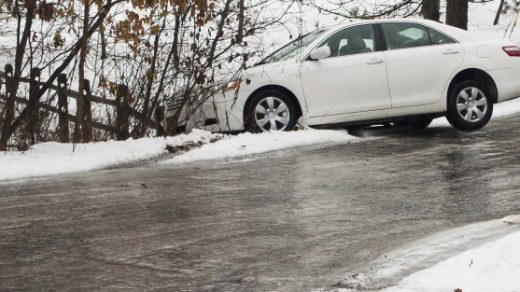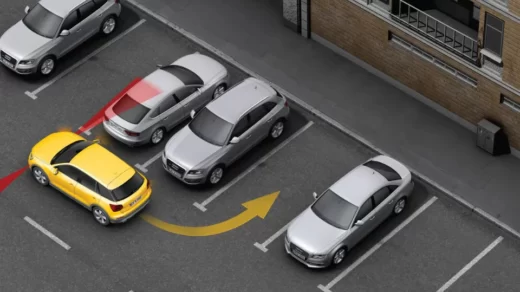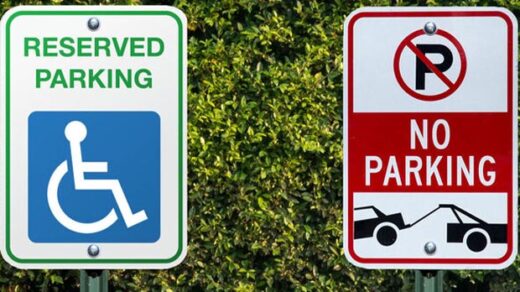How to park a manual car? Parking a manual car is undoubtedly different than parking an automatic transmission car. With a manual transmission car, if you’re not very adept at shifting gears, you’ll have a lot of trouble with something that ought to be easy, like parking.
When parking on specific levels of terrains, you must be aware of what gear to choose. You cannot utilize the parking gear because it does not exist, unlike an automatic transmission.
However, it will become much simpler for you after you understand a few basic techniques for parking a manual transmission vehicle.
Read More About Car Parking: What To Do When Car is Sliding on Ice?
Table of Contents
What to Do Before You Leave Parked Manual Car?
Unlike your stick shift car, an automatic transmission vehicle has a “park” gear. Always engage the parking brake on a manual car before you step out.
If it isn’t already there, you should typically shift the automobile into first gear after parking. However, put the car in reverse if it is heading downward. When backing into a spot, some people advise utilizing reverse as well, however, on a flat surface, either one is acceptable.
On rare occasions, you could choose to leave the car in neutral. When there are automobiles in front of and behind you in an entirely flat parking area, that is. Clutch disengagement puts less strain on your transmission if one of the automobiles hits you as it prepares to pull away. Make sure your emergency brake is engaged if you do choose to use the neutral gear.
However, put the stick shift in gear if there is even a slight incline. It is preferable to not rely on the parking brake or the transmission to support the manual transmission vehicle on its own.
Turn the front wheels if you are parking on a hill before turning off the engine. Turn the wheel in the direction of the side of the road if you are going downward. The vehicle will leave the road if it rolls.
Turn the wheels away from the curb if there is one if you’re facing uphill or toward the side of the road if there isn’t. A rolling car will be halted by the curb in the first scenario, and if there is no curb, the car will roll off the road.
How to Park A Manual Car?
- The procedures for parallel parking a manual gearbox car are as follows:
- Use your right turn signal to indicate what you want to do.
- Advance 2-3 feet parallel to the automobile in front of the spot.
- Check for traffic by gazing around, using your backup camera, and your mirrors.
- Start by pressing the clutch and brake pedals all the way to the floor.
- Straighten the wheel of the vehicle.
- Allow the clutch pedal to rise until the biting point is felt. The rear of the car will lift slightly and the engine sound will change.
- Release the brake pedal’s pressure as soon as the car starts to drive.
- Maintain a calm, steady pace by using the brake and clutch pedals.
- Turn the steering wheel to the left when your rear bumper is 2 to 3 feet behind the bumper next to you.
- Turn the steering wheel in the opposite direction when your right rear bumper is a few feet from the curb.
- As you come to a stop, apply additional force to the clutch and brake pedals to slow the vehicle down.
If everything goes according to plan, you’ll find yourself parallel to the curb and just a foot or so away on a good day. You will need to modify it because it won’t always be the case. Until you are in the right position, move forward and backward while controlling the brake and clutch pedals. The cars in front and behind you should be at least a foot apart from you and parallel to the curb.
How To Park A Manual Car in All Situations
All drivers must learn how to parallel park and park on slopes, even those who never intend to use a stick shift. Drivers of manual transmission vehicles face two challenges when parking. First, become an expert in all the abilities required by automatic car drivers. Second, learn to manipulate your clutch precisely so that you can travel at extremely slow, controlled speeds.
These are the same abilities required to accelerate out of a halt and restart uphill in first gear. It will benefit you in every element of driving a stick shift if you can parallel park and park on slopes. You’ll become more assured in your parking abilities as you become stronger at clutch control in all driving situations.
Tips for Parking A Manual Car
Below are suggestions for parking, a manual gearbox car is shown below. First gear and reverse gear are the two gears you should pay the most attention to.
1. Continue with First Gear
Unlike an automatic transmission vehicle, a manual transmission vehicle lacks park gear. This means that you should make it a habit to put the transmission in first gear after you turn off your car’s motor whenever you want to park it.
If you merely leave the car in neutral, even on a very modest slope, it will start to roll away, which could result in a variety of damages. Additionally, you can use your emergency parking brake.
2. Valet Parking on a Hill
If you have the emergency brake engaged and are parked on a hill, there is still a potential that your car could roll if the gears aren’t in the proper position. Depending on which way the car is facing up the slope, the appropriate gear must be selected.
Put the transmission in first gear and turn the front wheels to point away from the curb if the car is facing uphill.
Set the gear to reverse if the car is going downhill and turn the front wheels so they are pointing at the curb.
Regardless of the gear you select, make sure the emergency brake lever is constantly engaged.
3. Parking without bias
It is frequently advised to put your gear in neutral when parking between two cars on flat ground. It would assist safeguard your transmission in the unlikely event that you were to unintentionally run into someone.
4. Parking Forward
You would typically shift into first gear and activate the emergency brake if you were pulling into a driveway or parking spot at a business. However, it should still be safe to utilize reverse gear as well.
If the parking spot is situated on a steep incline, neither of these rules apply. However, the majority of parking spots are on flat ground. You’re not parked between two automobiles, thus you shouldn’t utilize neutral.
Always engage the neutral gear and emergency brake together.
5. Parking in reverse
You should keep your car in reverse after you’ve fully pulled into a driveway or parking place if you’re parking it there.
You could get away with first gear, but if you’ve backed into the parking place rather than moving forward into it, leaving it in reverse is preferable.
Hope this article is useful for you!



